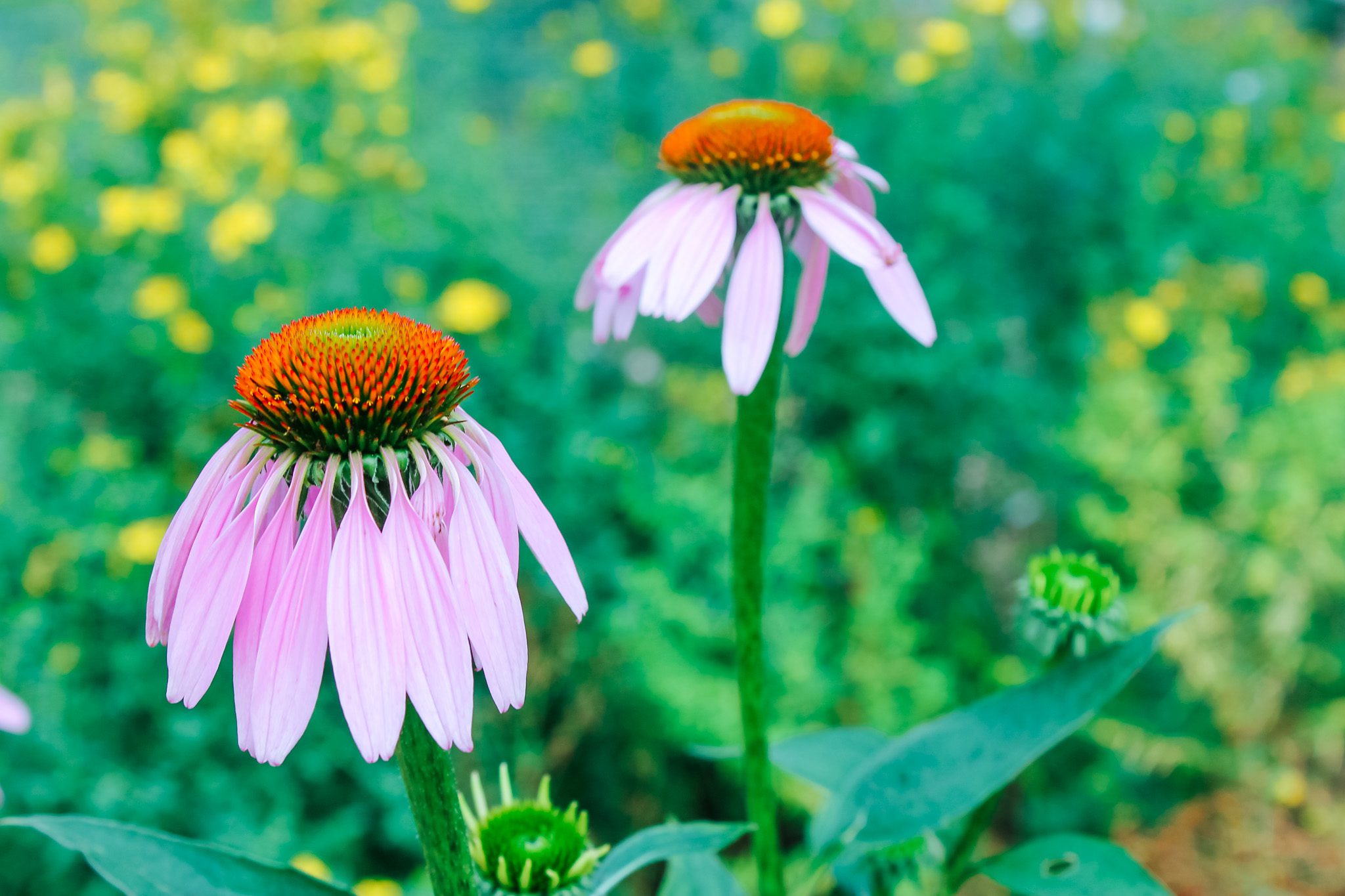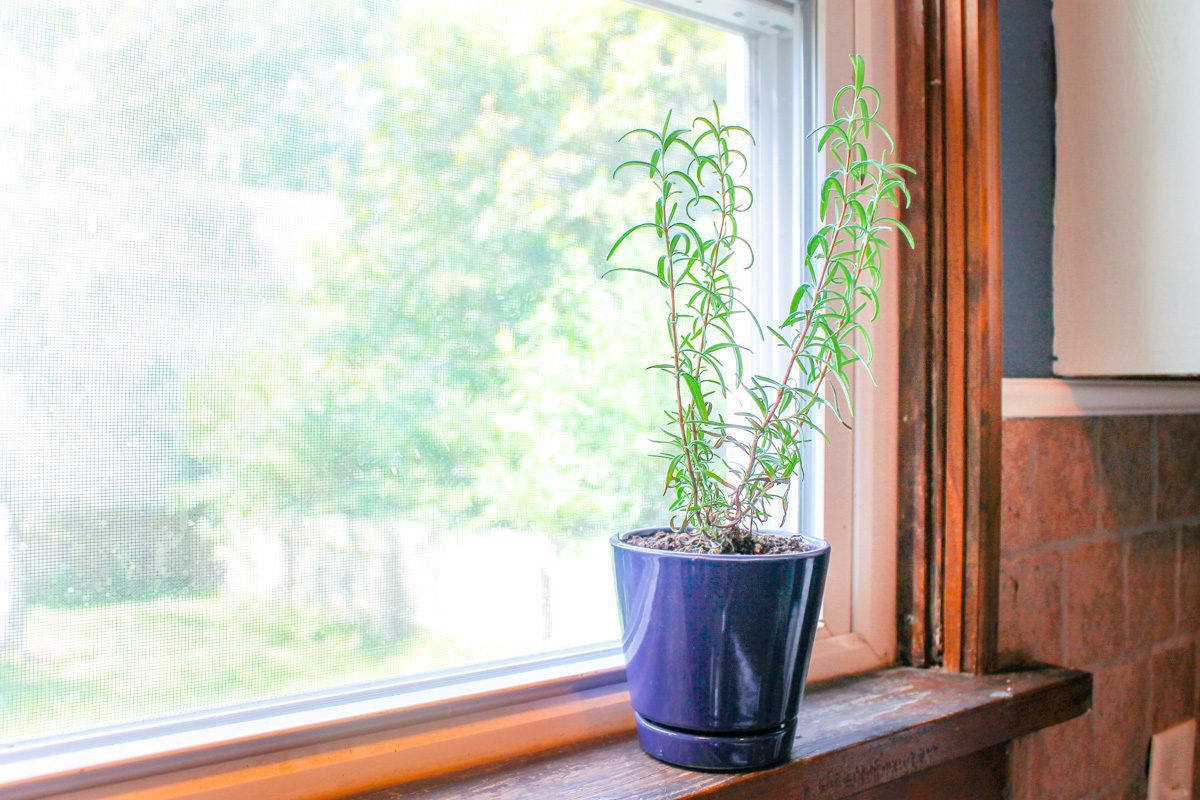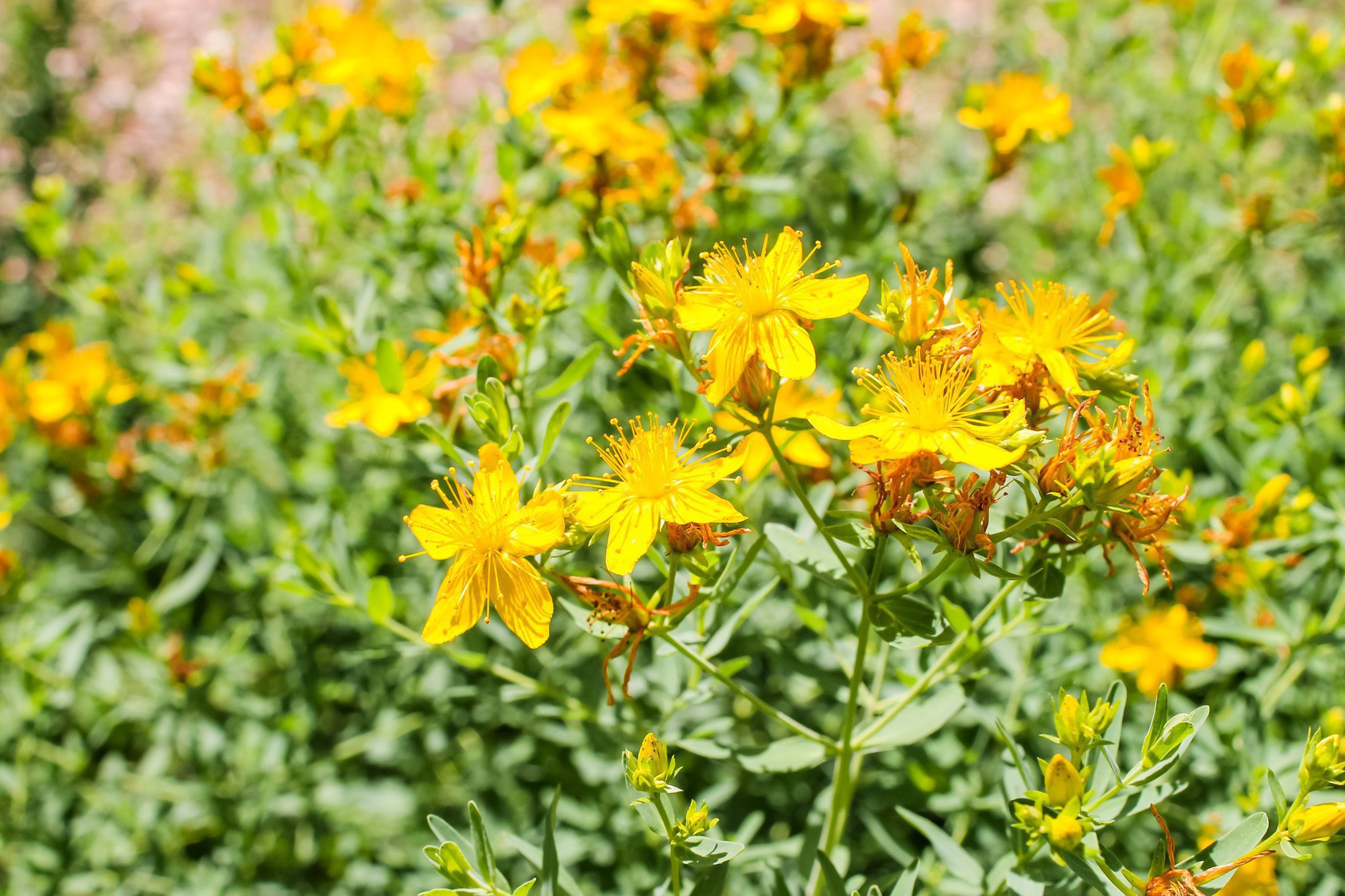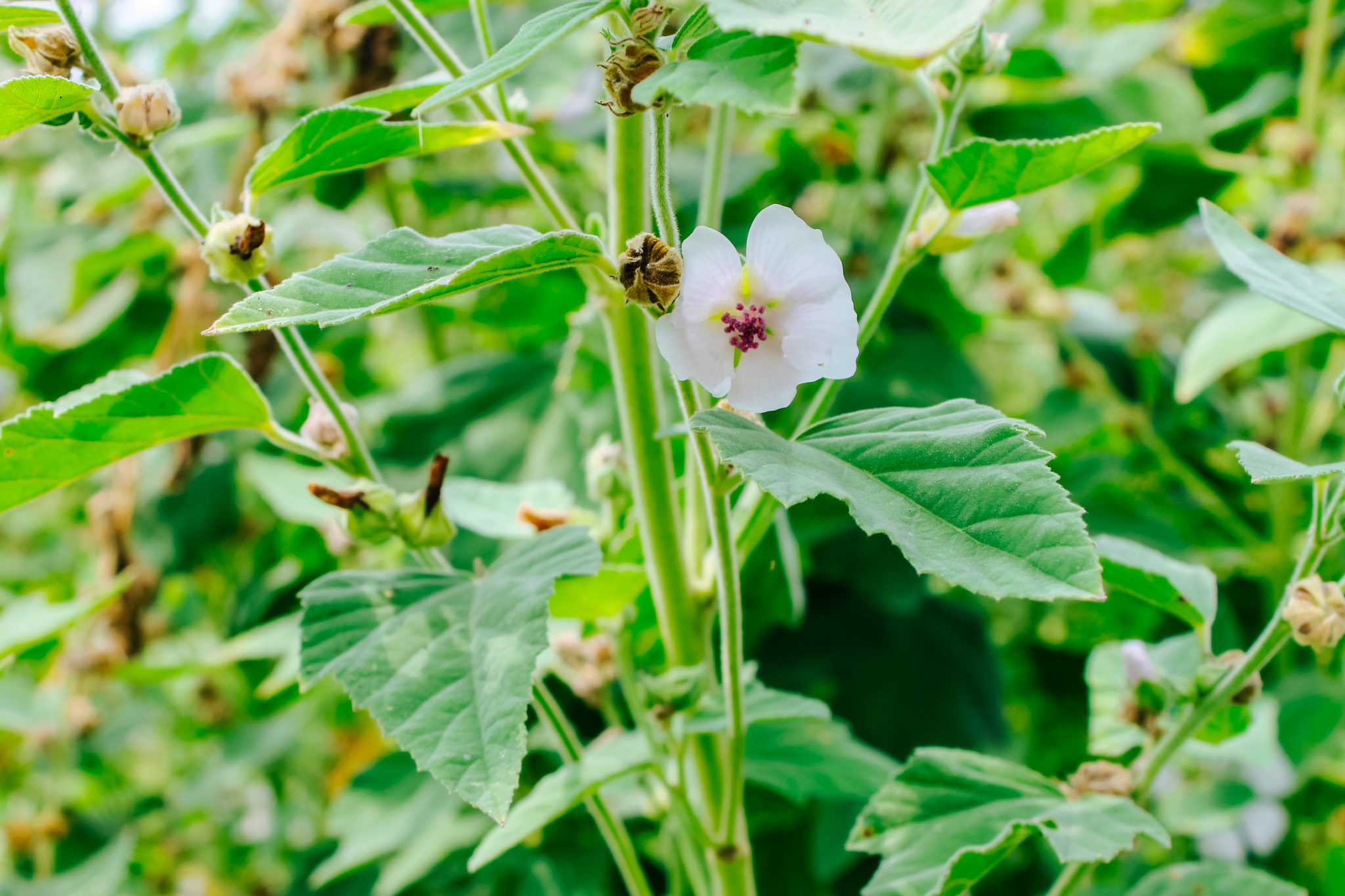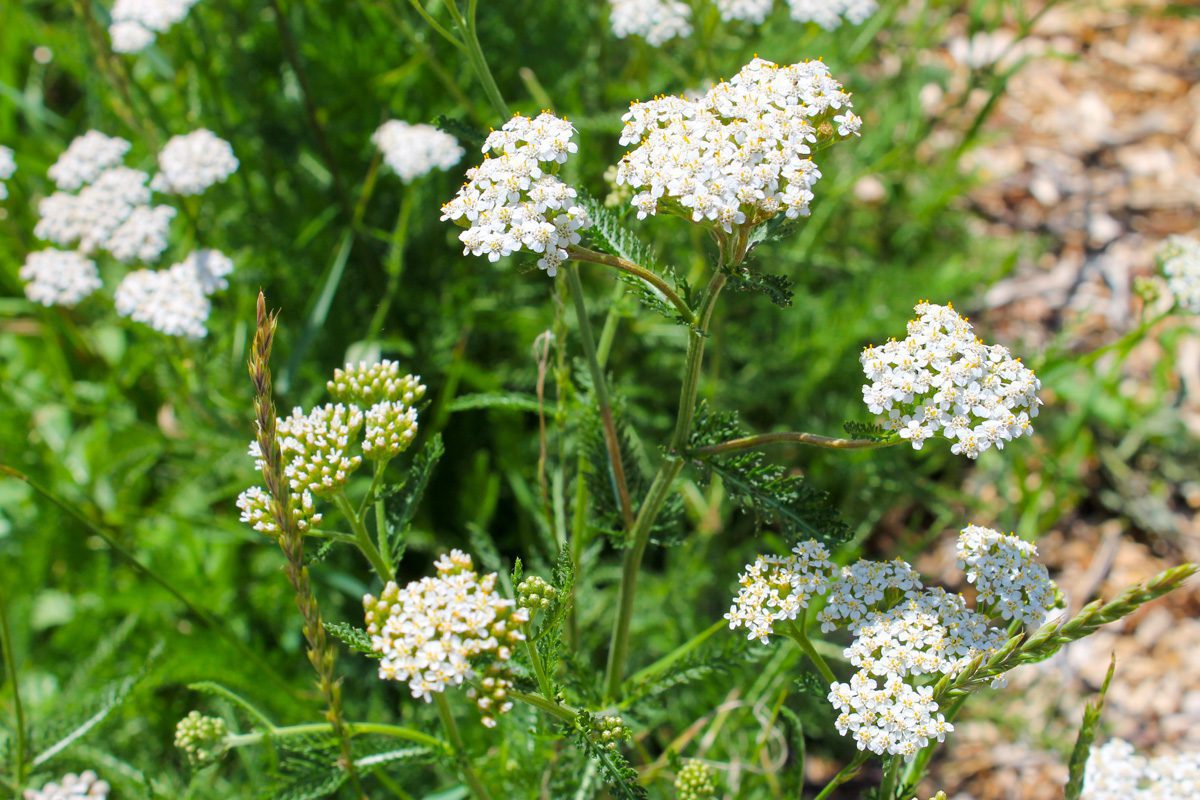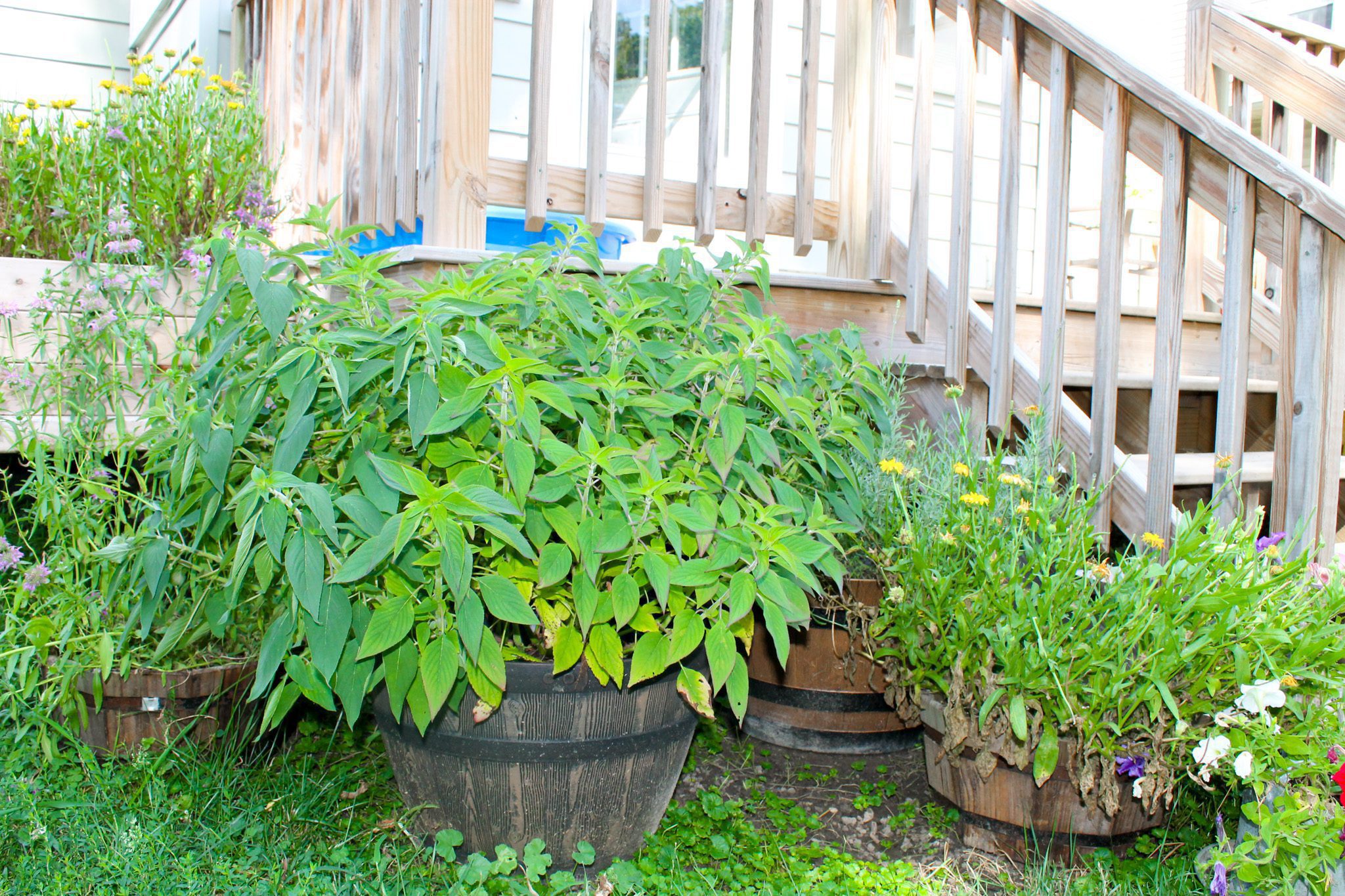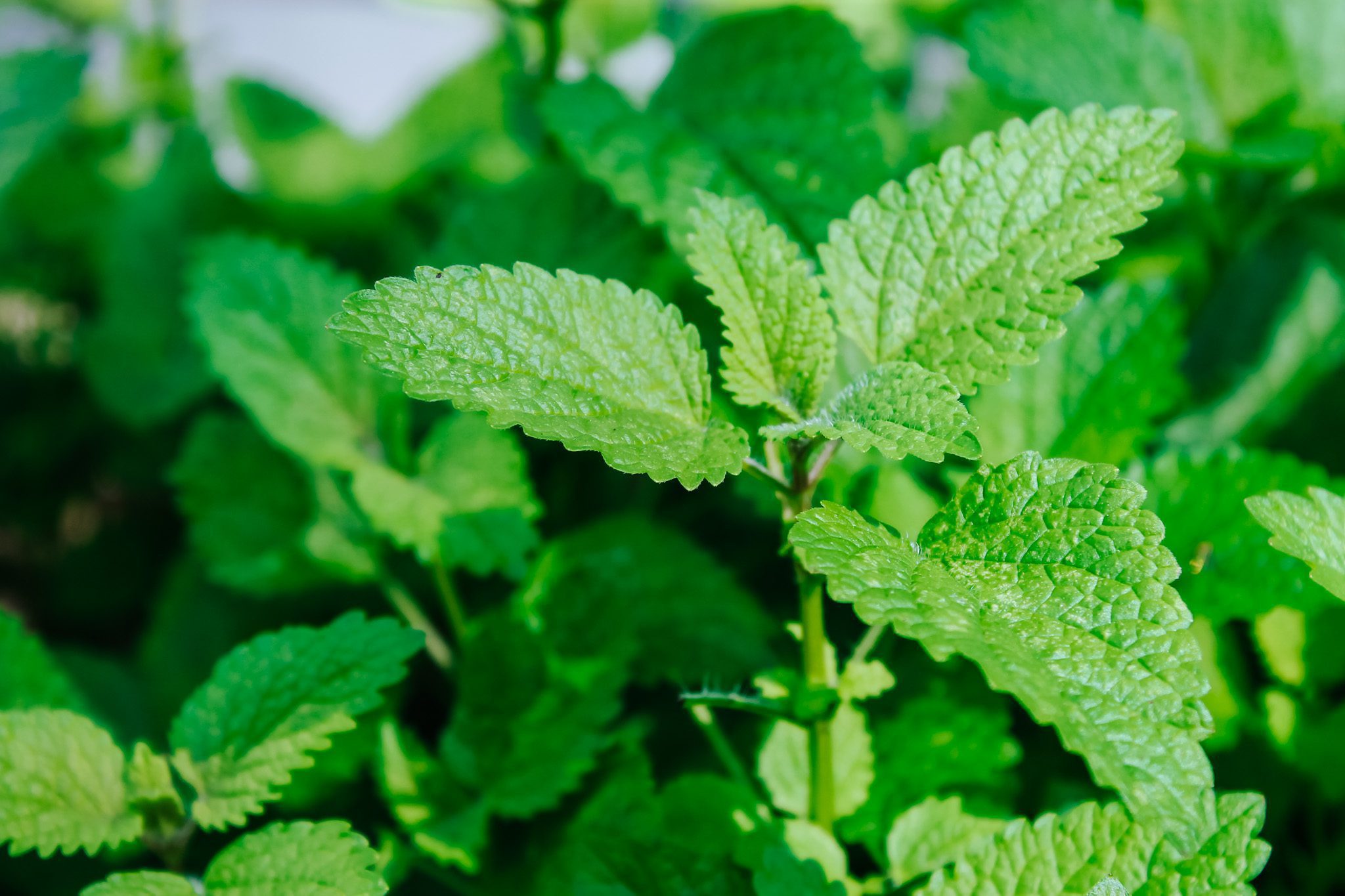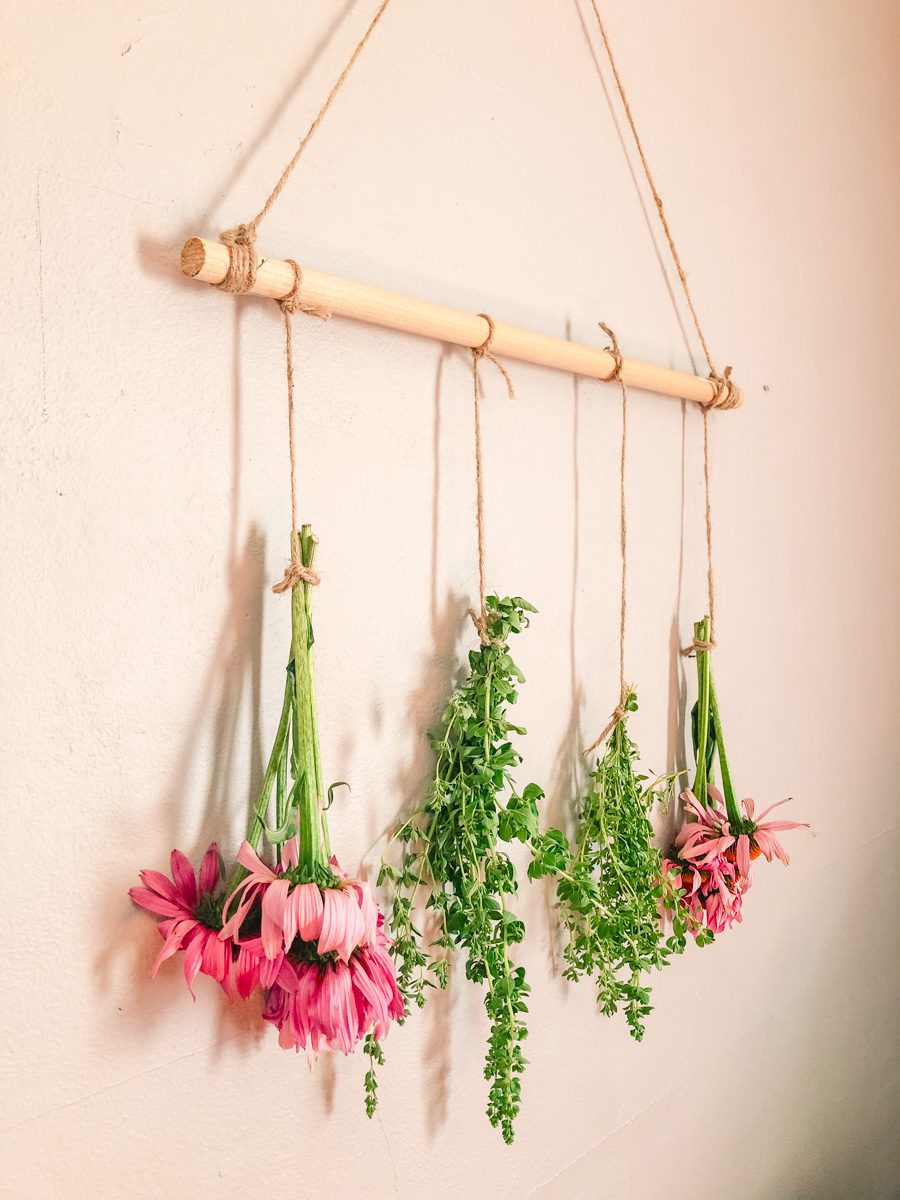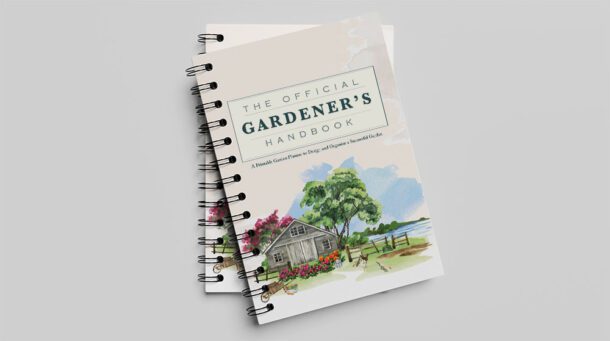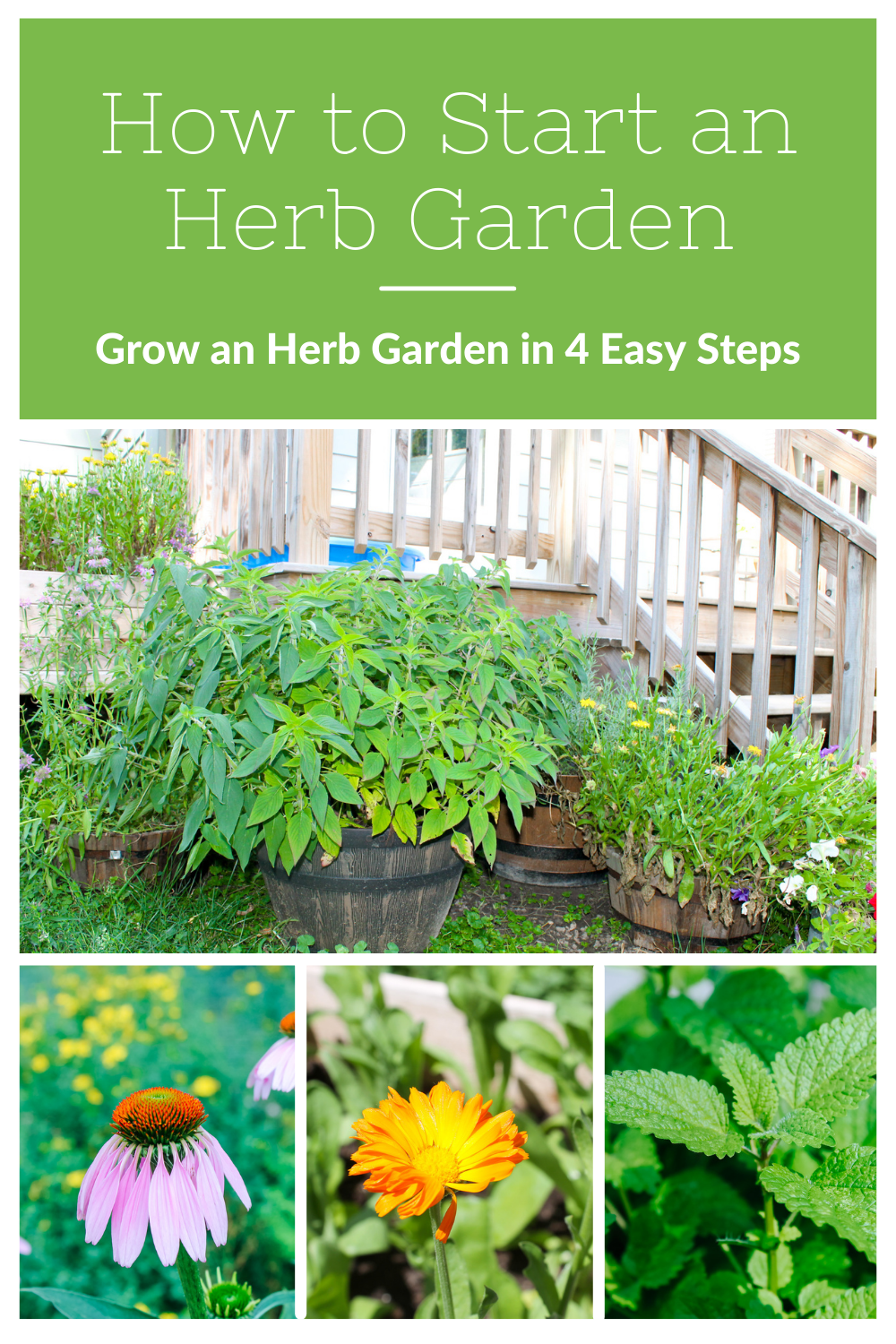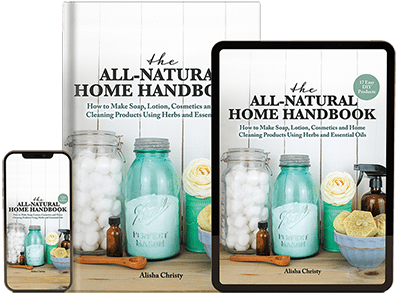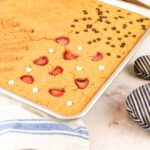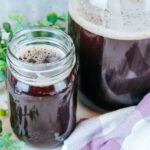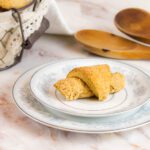Starting an herb garden is a great way to include fresh flavor into your meals or to begin building a natural medicine cabinet. Learn how to start an herb garden, wherever you live, in this gardening guide.
I love growing herbs. There are so many varieties to choose from, such as a culinary herb like thyme that make delicious roasted chicken. Or a medicinal herb like calendula that can reduce swelling when you clumsily drop a brick on your foot. Don’t ask me how I know that.
Herbs can be one of the most beautiful plants you can grow in your garden. Take chamomile for example. There is such a joy in watching those daisy-like heads flutter in the wind all summer long. And when it comes time to harvest, plucking the tops off is a satisfying feeling, knowing that they’ll be used to make calming teas, homemade soap and lotion.
Growing an herb garden and living a natural lifestyle go hand in hand. Perhaps that is why I love growing herbs so much. They play a big role on our natural homestead and will continue to do so as we strive to learn more about them.
If you are seeking a more natural life and are ready to delve into the world of botanical medicine but don’t know how to start, then you’ve come to the right place. Here you’ll find all sorts of information about learning how to start an herb garden, where to plant, how to create a natural medicine cabinet as well as harvesting, drying and storing herbs.
Grow an Herb Garden in 4 Easy Steps
Starting an herb garden doesn’t have to be complicated. You can begin with just a couple of indoor plants first and then expand into your backyard when you get more comfortable. I have found that it’s best to select a couple of herbs and learn about their properties and where they grow best. Then the following gardening season you can add more.
Step 1: Choose a Location for Your Herb Garden
When deciding where to plant a garden the first thing to consider is whether to start an indoor herb garden or an outdoor garden. Space and weather will be the determining factors. If you live in town with a small yard, in an apartment or a home set in a very cold climate, growing an indoor garden in a window sill or on a porch is a great option. Even though we have room in our yard to grow a variety of herbs, I do enjoy having a few plants growing in our kitchen herb garden. They are a delight to have during the winter months when fresh herbs are hard to come by.
Growing herbs outdoors certainly allows you to produce a larger variety of herbs. When selecting a spot for your herb garden, choose a place that gets plenty of sunshine, is away from high water and is near an easy to access water source.
Ultimately, you can grow most herbs practically anywhere as long as you have good soil, light and drainage.
Step 2: How to Decide What Herbs to Grow
Before you jump online to purchase seeds, you will need to determine your zone number. Every region has a different climate. Knowing what zone you are in will help you to know what herb thrives in your area and what does not. For example, I wanted to grow turmeric this year. I drew up a plan to grow this wonderful herb for inflammation and had already selected a spot for it in the yard near my back deck. Without taking into consider my zone number, I later discovered that turmeric likes pretty warm, humid environments, which isn’t ideal for our homestead in northern Ohio.
Once you had decided what zone you are in, now it is time to set up a plan of action. Do you want to grow herbs to cook with? Or do you plan to use them medicinally? Many herbs fall into both categories such as thyme, sage, basil and oregano. The majority of the herbs we grow are used for medicine. Medicinal herbs can be used to support a healthy body, heal and soothe, add into soaps, salves, balms and cosmetics and tossed into home cleaning products. Below are a few of my favorite kitchen herbs and medicinal herbs.
5 Best Culinary Herbs to Add to Your Food
Thyme. This fella has to be my most popular herb in our kitchen. I love tossing it onto skillet roasted chicken and potatoes or seasoning our spaghetti. Thyme is easy to grow and does not take up a lot of room in the garden. It is a perennial, so if you take care of it, you’ll have it for years to come.
Cilantro. Well known as a great addition to salsa and other Spanish foods, cilantro is an excellent herb to use in your kitchen. If you’re growing in during the summer months, keep an eye on it. Once full grown it doesn’t last long until it bolts. Cilantro does not have any medical properties but it is good for pulling heavy metals from your body.
Basil. I don’t use basil as often as I should but it sure does make a great addition to soups, pizza and my chicken and dumpling recipe. Basil is one of those herbs that is good for cooking or as a medicine. One year I used it to create a sore throat spray to ease my husband’s pain.
Garlic. Where do a start with garlic? Delicious! It’s an excellent addition to almost any meal and is my go-to in my homemade salad dressing recipe. It’s also known to be good for the gut, a great antibiotic, a prebiotic and it can be used to treat ear infections. Can you really ever have too much garlic? Though I’ve never had the opportunity to grow garlic in our garden, I hear that it is quite simple to do.
Dill. Another favorite herb of mine. If only dill had medicinal properties, I’d be as healthy as a horse! Dill is simple to grow but it can get quite tall so it must be planted in the ground outdoors. You can add dill to pickles, deviled eggs, potato salad or even sauerkraut.
5 Best Medicinal Herbs to Grow in a Healing Garden
Sage. When I think of sage, I often think Thanksgiving stuffing. It adds that traditional turkey dinner flavor that I’ve come to know and love. I have a pineapple sage plant growing in a large bucket beside our back deck and it produces more than we need for all of our culinary and medicinal purposes. Sage has wondrous antispasmodic abilities. We have used it to treat diarrhea and added it into bars of soap for it’s astringent properties.
Lemon Balm. I absolutely love growing lemon balm. It is part of the mint family so we like grow it in one of our raised beds to keep it contained. Lemon balm has a lemony flavor and is great for digestive issues, reducing gas, calming the nervous system and makes a wonderful tea.
Calendula. Also know as the pot marigold, calendula is a beautiful, cheery herb that not only looks lovely in your garden but also has wondrous healing benefits. It has antibiotic and anti-inflammatory properties, destroys ulcers, helps to decrease pain and accelerates cell division in your body helping to heal your body faster. If planted in good soil with plenty of sun and water, calendula will reproduce continuously.
Oregano. A culinary and medicinal herb, oregano is an easy plant to grow. Years ago I purchased a starter plant at a local greenhouse, took it home, planted in our garden and to this day it has survived the summer heat and long, cold winters. Oregano is good to use for many conditions but we primarily use it at the first sign of a cold. If taken early enough, it stops the cold virus in its tracts and we tend to feel better in a day or two.
Marshmallow. This herb can get quite tall so it is not appropriate for small spaces or as an indoor herb. Mallow is great for soothing the guts or inflammation in the lungs, reduces coughing and helps to heal wounds and irritated skin.
Step 3: Where to Buy Herbs Seeds Or Herb Plants
If you are a beginner, buying starter plants from a local greenhouse is the easiest way to create an herb garden. Simply purchase and transfer them into your garden or container of choice.
We grow most of herbs from seed. There are plenty of places to purchase your seeds from like hardware stores, tractor supply or sometimes even a grocery store. We always purchase our seeds online from trusted seed stores like Baker Creek Heirloom Seeds, True Leaf Market, Strictly Medicinal Seeds and Johnny’s Seeds.
Step 4: How to Plant an Herb
When to Plant
The timeframe of when to plant your outdoor garden depends on where you live. If you are starting seeds indoors, it’s best to start your seeds about 45-60 days before your last frost date. In Ohio our last frost date is generally Mother’s Day. If you are planting your seeds directly in the ground, try to wait until the last frost.
Add Plants to Soil
When planting your herbs inside to create an indoor herb garden, simply fill the pot with high quality potting soil, plant the seed or starter plant directly into the soil, then cover with a layer of dirt. Make sure you select a container that has a drainage hole in the bottom of pot. If not, you may need to drill a hole before you add your soil.
To directly sow a seed into the ground, place the seed in the dirt and cover with a light layer of soil. For a starter plant, dig a hole slightly larger than the transplant. Carefully pull apart the root system at the bottom of the plant so that the root system will grow out. Place the plant into the ground along with a little compost (if you have some) and some soil. Cover with dirt and a layer of mulch.
Water Your Plants
Once your seed or transplant has been planted, it is time to water. Give the herbs a thorough drink but do not drown them. Keep them moist throughout the next few days, especially if you’re trying to get a seed to sprout.
Label Your Herbs
Don’t forget to label your plants! Nothing is worse than walking through the garden and not knowing what is what. If you jump on Pinterest, there are a ton of aesthetically pleasing ways to label your herbs. But if you want practical over beauty, you can use a simple painting stick and a sharpie marker.
How to Harvest Herbs
To harvest an herb, you can use your hands to collect the leaves or flowers. A small pair of gardening scissors is the most gentle way to cut from the plant without causing damage. If you are trimming the flowers or leaves of a medical herb, generally the upper third is what you are after. For culinary herbs like chives, you can cut near the base, leaving just a bit of the steam left to encourage the plant to continue to produce.
How to Preserve Herbs
Fresh herbs come in an abundance when it’s warm and sunny out. It’s easy to pick some sage to add to your dinner. But if you plan to use them throughout the winter months, you will need to preserve them. There are plenty of easy ways to dry herbs. Learn how to properly dry and store your homegrown herbs in this article.
Growing an herb garden can be very rewarding. After you start, you’ll be hooked!

